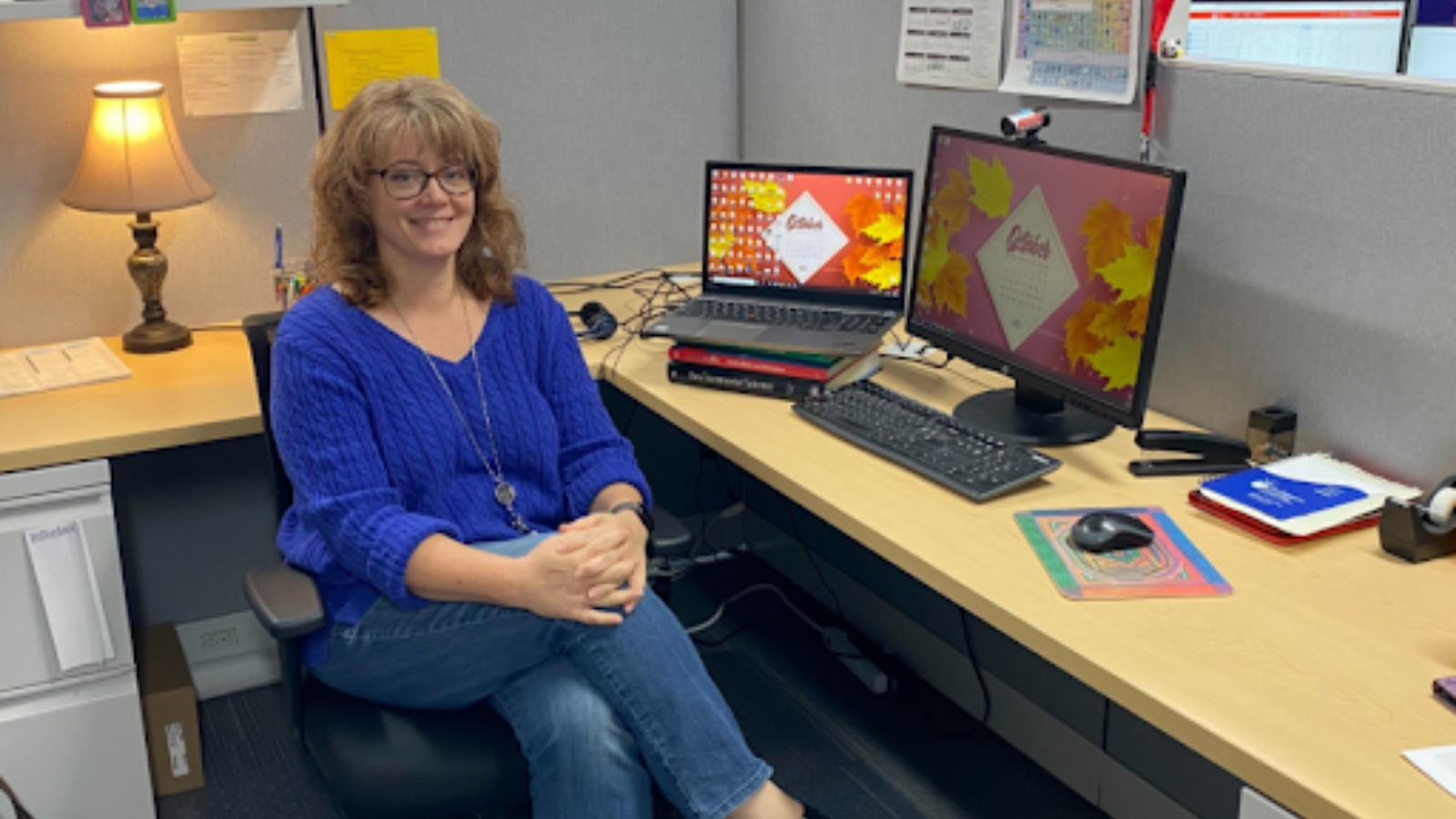
High school science teacher, Mrs. Kelly Collins, began her career at PA Distance in 2016 teaching middle school science. She recently switched to teaching high school science which includes environmental science, earth science, and AP environmental science.
“I always wanted to do something to make a difference,” she said. “But I didn’t always want to be a teacher.”
Before earning her teaching degree and certification, Mrs. Collins worked in different wet and environmental chemistry labs throughout the Pittsburgh area for over 10 years. One of which was the architectural finishes department at PPG where she worked with the company’s variety of paints, coatings, optical products, and specialty materials.
After realizing she wanted to do something more with her career, she decided to make the switch to teaching and went back to school at Point Park University to earn her Master’s degree in Secondary Biology Education.
“I absolutely love science,” she said. “I really want to educate the next generations with important facts and scientific literacy that they will see moving forward.”
Now, as a high school science teacher at PA Distance, Mrs. Collins teaches her students about a variety of relevant topics from the structure of the Earth’s crust to astronomy to the chemistry behind the Earth’s changing climate.
“Environmental science is my first love,” she explained. “But, the students make everything worthwhile. They are why we do what we do,” she said.
“My environmental science course is truly cross-curricular. It’s a combination of ecology and human impact on the environment,” she said. Students learn about responsible land management, biodiversity, our earth’s natural resources, genetically modified organisms (GMOs), and climate change.
In her Earth science classes, Mrs. Collins teaches the study of Earth’s minerals and energy resources, the water, weather, and climate in the past, the environment, and human developments.
“I teach astronomy in my Earth science class and my students love it,” she added.
Incoming 9th-graders can take one of three science classes: biology, environmental science, or physical science. However, if they were students prior to beginning high school they would have taken physical science in 8th grade. Biology is the only science class that each student must take before graduating. Later on, they also have the choice to take physics and chemistry as upperclassmen.
“I work career pathway conversations into my units a lot,” she said. “I tell them about all of the jobs I’ve had before becoming a teacher so they appreciate my first-hand experience.”
The science department sends out a variety of kits, which they get to keep, along with some other hands-on activities and scientific demonstrations.
In addition to the rock and mineral kits, Earth science students receive rock and mineral kits, materials to grow their own crystals using borax and clay. Using the clay, students utilize it to help understand the structure of the earth's crust.
-Apr-25-2022-03-04-13-03-PM.png?width=1600&name=Untitled%20design%20(3)-Apr-25-2022-03-04-13-03-PM.png)
Although Mrs. Collins was new to teaching and to teaching virtually just five years ago, she has come to recognize the many benefits of a cyber environment for her students.
“The advances in technology and software have made a huge difference in cyber education,” she added. “It makes learning so much easier for the students.”
“The best part about working here is watching the students relax and start to enjoy school,” she explained. “The students are so kind to each other. They support each other and it helps.”


